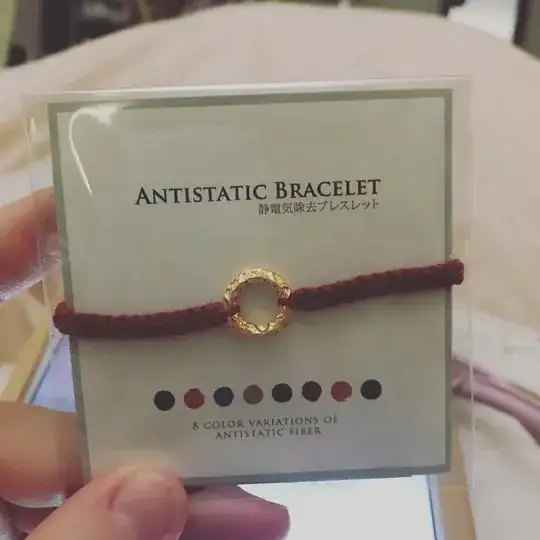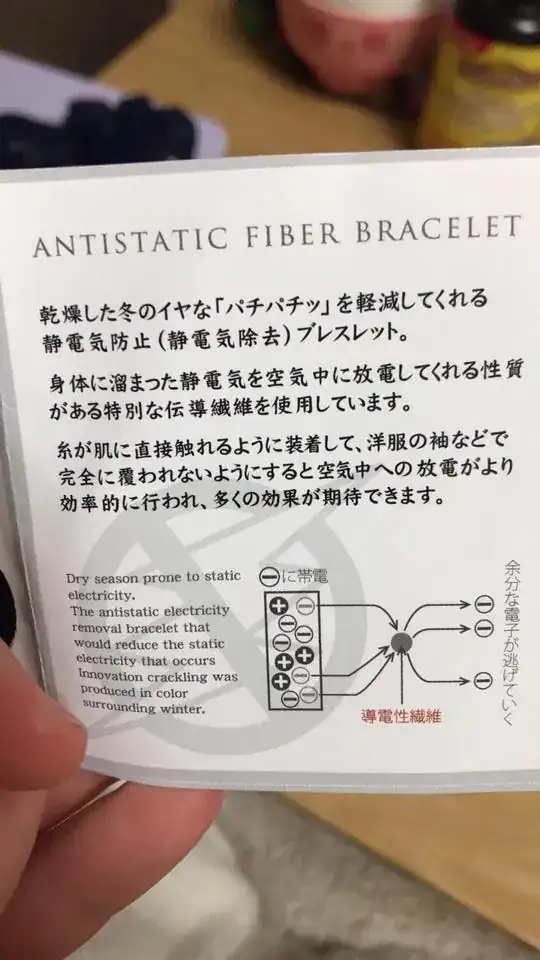Last winter in Japan, some of my friends were buying bracelets like this, that claim to prevent or reduce static shocks:
Here is an advertisement picture describing how it is supposed to be used, please note that unlike ground bracelets, it is not connected to anything but your wrist:
Here is the science behind it:
My translation:
This is a static electricity prevention bracelet, it reduces the disagreeable "pachipachi" during dry winters.
It works by dispersing the body's charges into the air.
Wear it directly on the skin. You can hope for most efficient when not covered completely with clothes.
In the figure, the text in red reads "conductive fabric" and the text at the right reads "extra electrons fly away".
Question: Is this claim (reduce static shocks with just a small non-grounded bracelet) possibly true?


